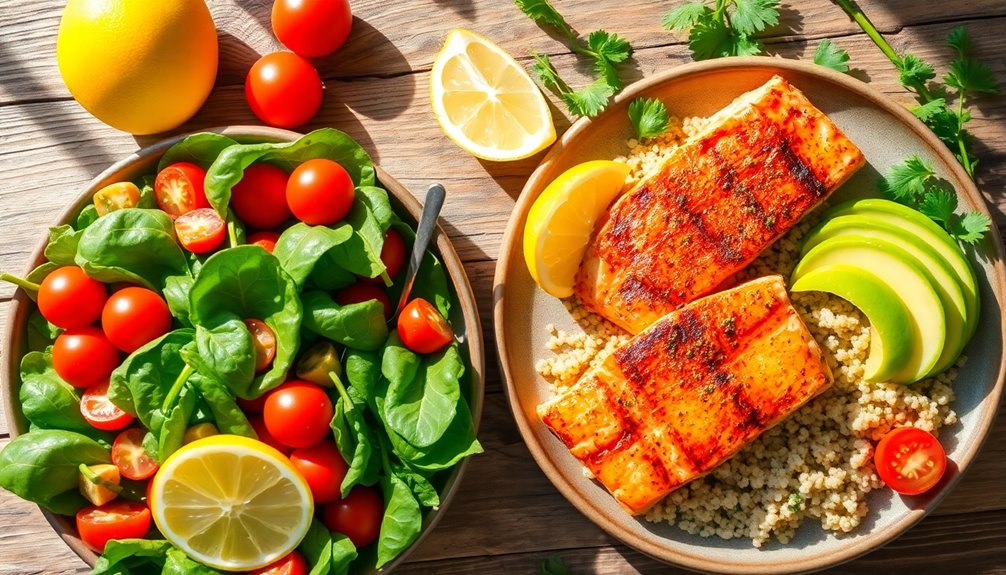A cardiac diet is designed to promote heart health by emphasizing whole, nutrient-dense foods and minimizing processed options. You should focus on incorporating plenty of fruits, vegetables, whole grains, and lean proteins into your meals while including healthy fats like nuts and olive oil. Limiting sodium, saturated fats, and added sugars is crucial for reducing heart disease risk. This approach not only helps lower cholesterol and blood pressure but also supports weight management and boosts energy levels. Understanding how to effectively plan meals can make this diet more enjoyable and sustainable, so there's more to uncover about meal planning and tips for success.
Key Takeaways
- A cardiac diet emphasizes whole foods, including fruits, vegetables, whole grains, lean proteins, and healthy fats, to promote heart health.
- It limits processed foods, sodium, saturated fats, and added sugars to reduce the risk of heart disease.
- Incorporating healthy fats from sources like avocados and nuts can help lower bad cholesterol levels.
- Regular meal planning and portion control are essential for maintaining a cardiac diet and achieving long-term success.
- Benefits of a cardiac diet include improved cholesterol levels, lower blood pressure, weight management, and enhanced overall well-being.
Understanding the Cardiac Diet
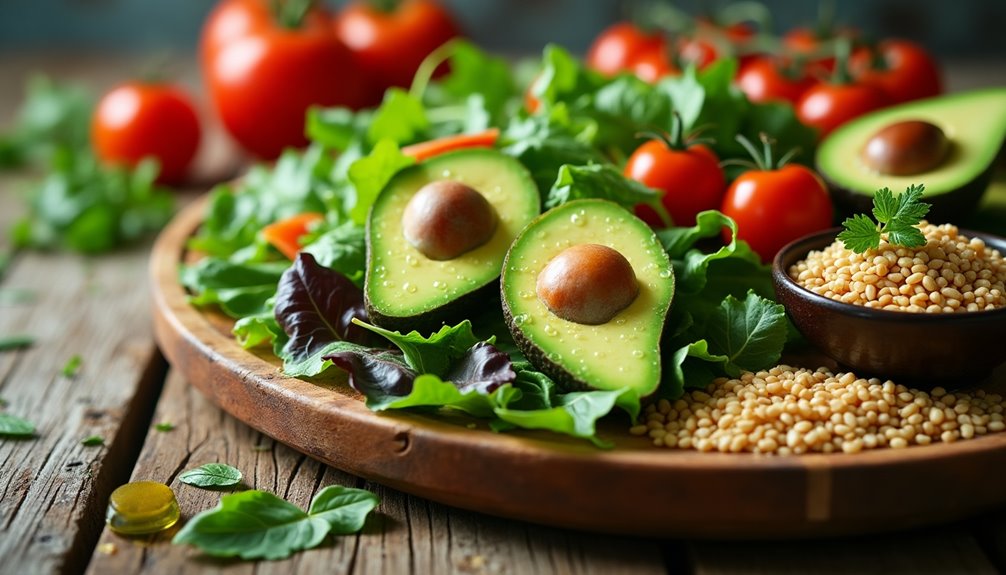
When you're looking to improve your heart health, understanding the cardiac diet is essential. This diet focuses on specific nutritional guidelines that promote cardiovascular well-being. It emphasizes whole foods, rich in nutrients, while minimizing processed options that can increase your risk of heart disease. Incorporating fruits, vegetables, whole grains, lean proteins, and healthy fats forms the foundation of this diet.
To help you navigate this journey, it's pivotal to be aware of dietary restrictions. These may vary based on individual health needs, but common restrictions include limiting sodium, saturated fats, and added sugars.
For instance, a high intake of sodium can lead to hypertension, while saturated fats may elevate cholesterol levels, contributing to heart disease. Additionally, focusing on lowering oxidized cholesterol levels is crucial for reversing plaque buildup in the arteries.
You don't have to feel overwhelmed by these guidelines. Instead, think of them as a roadmap to better heart health. By gradually integrating heart-healthy foods into your meals, you'll find it easier to stick to these principles. Planning meals ahead of time can help you stay on track, ensuring you have nutritious options readily available.
Key Components of Heart-Healthy Foods
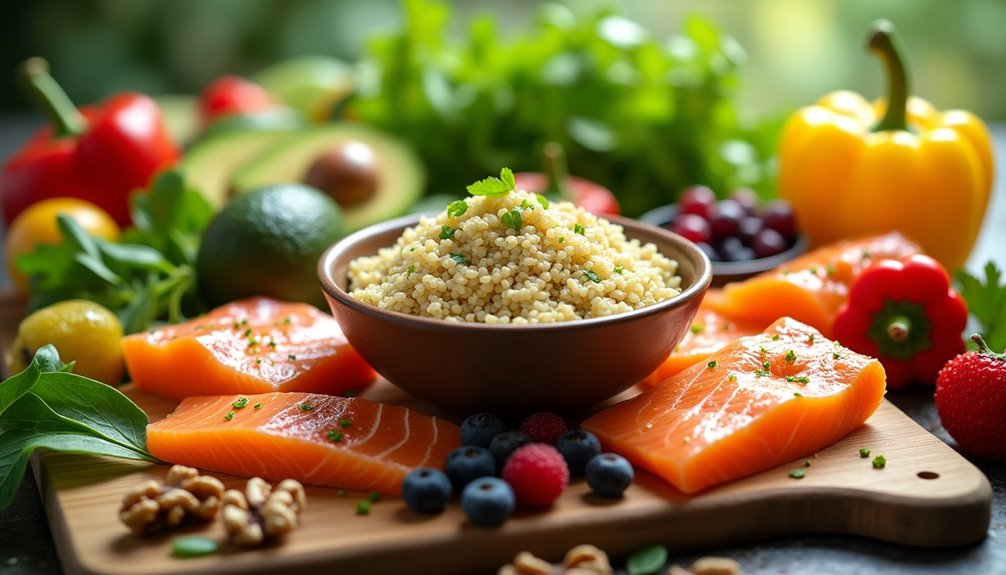
To truly embrace a heart-healthy lifestyle, you need to focus on key components that nourish your cardiovascular system. Making informed food choices can greatly impact your heart health. By prioritizing nutrient-rich choices, you'll provide your body with essential vitamins, minerals, and antioxidants that support overall well-being.
Here are some key components to ponder when selecting heart-healthy foods:
- Fruits and Vegetables: Aim for a colorful variety to maximize nutrient intake.
- Whole Grains: Choose options like quinoa, brown rice, and whole wheat bread for fiber and nutrients.
- Healthy Fats: Incorporate sources like avocados, nuts, and olive oil, which can lower bad cholesterol levels.
- Lean Proteins: Opt for fish, poultry, and plant-based proteins such as beans and lentils to support muscle health without excess saturated fats.
- Low Sodium Options: Reducing sodium intake helps manage blood pressure, making heart health more achievable.
Remember, portion control is just as important as what you eat. Even healthy foods can contribute to weight gain if you don't monitor serving sizes. By practicing portion control, you can enjoy a variety of foods while still maintaining a balanced diet. Additionally, a plant-based diet can help lower cholesterol levels and enhance heart health through its rich nutrient content.
Incorporating these heart-healthy components and practicing mindful eating habits will help you cultivate a lifestyle that supports your cardiovascular health and fosters a sense of community with others on the same journey.
Benefits of Following a Cardiac Diet
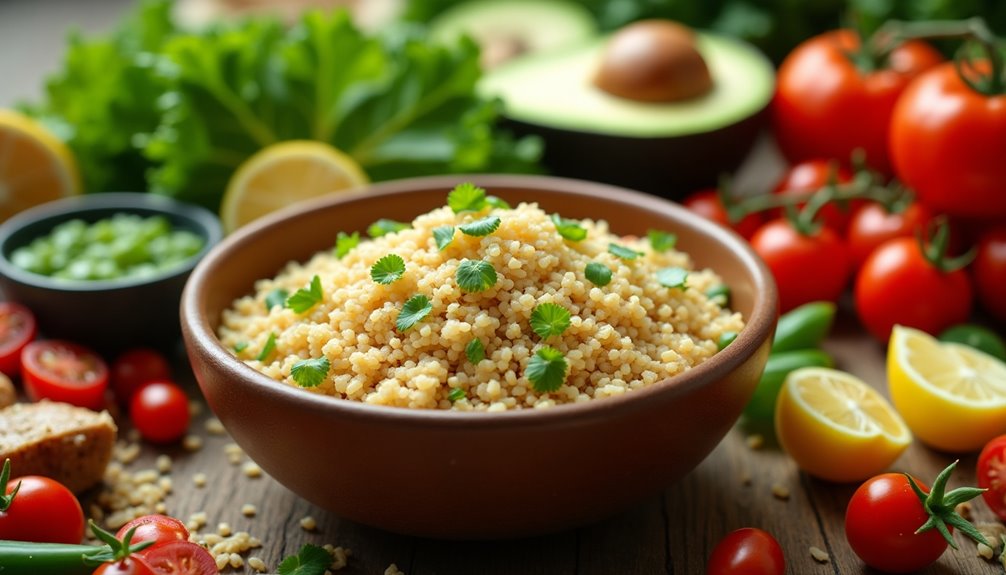
Following a cardiac diet offers numerous benefits that can greatly enhance your heart health and overall well-being. By making targeted lifestyle changes, you'll not only improve your heart function but also foster a healthier life. These dietary choices can lead to long-term benefits, reducing the risk of heart disease, high cholesterol, and hypertension.
Here's a quick look at some key benefits of following a cardiac diet:
| Benefit | Description |
|---|---|
| Improved Heart Health | Lower cholesterol and blood pressure levels. |
| Weight Management | Helps maintain a healthy weight, reducing strain on your heart. |
| Enhanced Energy Levels | Nutrient-dense foods keep you energized throughout the day. |
| Better Blood Sugar Control | Helps stabilize blood sugar levels, reducing diabetes risk. |
| Increased Longevity | Promotes a longer, healthier life through better heart health. |
Adopting a cardiac diet encourages you to replace processed foods with whole grains, fruits, vegetables, and lean proteins. This can be a fulfilling journey that not only benefits your heart but also fosters a sense of community as you share these healthy meals with friends and family. Additionally, incorporating low-carb, anti-inflammatory foods into your diet can significantly support your heart health.
While the initial lifestyle changes may seem challenging, the long-term benefits are worth the effort. You'll likely find that these changes not only improve your physical health but also enhance your emotional and social well-being. Embrace the power of a cardiac diet, and you'll be on your way to a healthier, happier life.
Sample Meal Plan for Cardiac Health
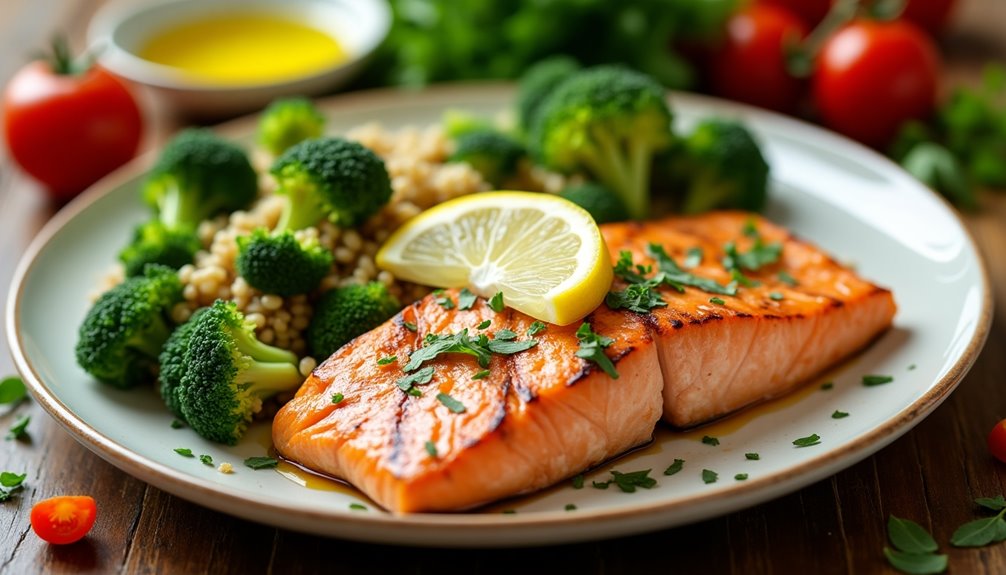
A well-structured meal plan is vital for anyone looking to improve cardiac health. By focusing on nutritious choices and mindful eating, you can make a real difference in your heart health. Here's a sample meal plan to get you started:
Breakfast:
- Oatmeal topped with fresh berries and a sprinkle of cinnamon
- A boiled egg for protein
Lunch:
- Grilled chicken salad with mixed greens, cherry tomatoes, and a vinaigrette dressing
- A small whole-grain roll
Snack:
– A small handful of unsalted almonds or walnuts
Dinner:
- Baked salmon with lemon and herbs
- Steamed broccoli and quinoa
- A side salad with a variety of colorful veggies
Evening Snack:
– Greek yogurt with a drizzle of honey
In this meal plan, portion control is key. You should aim to fill half your plate with vegetables and fruits, a quarter with lean proteins, and a quarter with whole grains. Additionally, incorporating whole food sources of protein into your meals can further enhance your overall nutrition and support heart health.
Meal timing also plays an important role; try to space your meals evenly throughout the day to maintain energy levels and prevent overeating.
Consider incorporating these practices into your daily routine:
- Choose whole, unprocessed foods
- Stay hydrated with water
- Limit sodium and sugar intake
- Prepare meals at home when possible
- Listen to your body's hunger cues
Tips for Sustaining a Cardiac Diet

Maintaining a cardiac diet goes beyond just planning meals; it involves adopting sustainable habits that support heart health over the long haul. Start by stocking your pantry with healthy snacks. Nuts, seeds, and whole-grain options not only satisfy cravings but also provide essential nutrients that benefit your heart. When you have nutritious snacks readily available, you're less likely to reach for unhealthy choices.
Dining out can be a challenge, but with a few strategies, it's possible to stick to your cardiac diet. Before you go, check the restaurant's menu online. Look for dishes that feature grilled, baked, or steamed options instead of fried. Don't hesitate to ask for modifications, like substituting a side salad for fries or dressing on the side. Remember, it's okay to share a dish or take half of your meal home; portion control is key to maintaining a healthy diet.
Another important aspect is meal prepping. Set aside some time each week to prepare heart-healthy meals. This not only saves time during the week but also makes it easier to resist temptations. Additionally, consider incorporating easy-to-follow recipes into your meal prep routine to make the process even smoother.
Ultimately, make sure to stay hydrated. Sometimes, we confuse thirst with hunger, leading us to snack unnecessarily. Drinking water throughout the day can help you feel satisfied and focused.
Frequently Asked Questions
Can I Have Coffee on a Cardiac Diet?
You might be wondering if you can enjoy coffee while managing your health. Moderate coffee consumption can be fine for many people, but monitoring your caffeine intake is crucial. Too much caffeine can raise blood pressure and heart rate, so it's wise to limit how much you drink.
Always consult your healthcare provider for personalized advice, as they can help you find a balance that works for your specific needs.
Are There Snacks That Are Heart-Healthy?
Absolutely, there are plenty of nutritious options for snacks that can support your heart health. Think about fresh fruits, vegetables with hummus, or a handful of nuts. These choices provide essential nutrients without excess calories. Just remember to practice portion control to keep your intake balanced.
You'll not only enjoy tasty treats, but you'll also feel good knowing you're making heart-smart decisions. Embrace these snacks, and you'll feel more connected to your health journey!
How Often Should I Eat Fish?
Imagine your heart dancing to the rhythm of good health! You should aim for fish consumption at least twice a week. This frequency offers you the benefits of omega-3 fatty acids, which are essential for heart health.
Regularly enjoying fish can lower your risk of heart disease and boost your overall well-being. By incorporating this tasty option into your meals, you're not just eating; you're nurturing your heart and embracing a healthier lifestyle.
Is It Safe to Use Salt Substitutes?
Using salt substitutes can be safe, but selecting wisely is crucial. Many low sodium seasoning alternatives are available that can enhance flavor without the added sodium. Just be cautious about products containing potassium, particularly if you're managing fluid intake or have specific health conditions.
Always verify with your healthcare provider to make sure these substitutes align with your dietary needs. Finding the right balance helps guarantee you enjoy your meals while maintaining good health.
Can I Drink Alcohol While on This Diet?
When you think of alcohol consumption, it might feel like you're losing a piece of your social life! But don't worry, you can still enjoy yourself while respecting diet restrictions. Moderation is key—occasional drinks can fit into your routine. Just be cautious; some alcohol can raise blood pressure and impact your goals.
Always check with your healthcare provider to guarantee your choices align with your health journey. You're not alone in this!
Conclusion
By embracing a cardiac diet, you're not just making a few healthy choices—you're launching a full-scale revolution for your heart! With its focus on nutrient-rich foods, this diet can greatly lower your risk of heart disease and boost your overall well-being. Remember, it's not just about what you eat; it's about cultivating a lifestyle that prioritizes heart health. So, take these tips to heart, and watch as your energy and wellness soar like never before!

